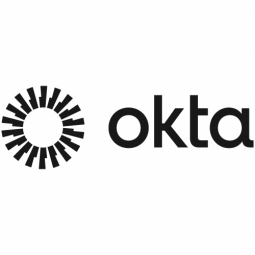Customer Company Size
Large Corporate
Region
- Asia
- America
- Europe
Country
- Japan
- United States
Product
- Okta Workforce Identity Cloud
- TakedaID
- Okta Customer Identity Solutions
Tech Stack
- Cloud-native solutions
- Identity and Access Management (IAM)
Implementation Scale
- Enterprise-wide Deployment
Impact Metrics
- Customer Satisfaction
- Digital Expertise
- Productivity Improvements
Technology Category
- Cybersecurity & Privacy - Identity & Authentication Management
- Platform as a Service (PaaS) - Connectivity Platforms
Applicable Industries
- Pharmaceuticals
- Healthcare & Hospitals
Applicable Functions
- Business Operation
- Quality Assurance
Services
- Cloud Planning, Design & Implementation Services
- Cybersecurity Services
- System Integration
About The Customer
Takeda is a global, values-based, R&D-driven biopharmaceutical leader headquartered in Japan, with a presence in over 80 countries. The company is committed to discovering and delivering life-transforming treatments, guided by a commitment to patients, employees, and the planet. Takeda focuses its R&D efforts on four therapeutic areas: Oncology, rare genetics and hematology, neuroscience, and gastroenterology. It also makes targeted R&D investments in plasma-derived therapies and vaccines. With a history dating back to 1781, Takeda has grown through continuous innovation and strategic mergers and acquisitions to become an industry titan. The company employs 70,000 people and is known for its leadership in oncology, gastroenterology, neuroscience, rare diseases, and plasma-derived therapies. Takeda's digital transformation efforts are aimed at unifying identity management across its diverse business units to provide secure and streamlined digital experiences for millions of patients, providers, and partners worldwide.
The Challenge
Takeda faced the challenge of managing complex and siloed identity processes across its diverse business units, which burdened patients, partners, and caregivers with fragmented digital experiences. The demand for simplified and secure digital interactions increased, along with the need to protect against security threats. As Takeda expanded through strategic mergers and acquisitions, the complexity of its technology and identity management processes grew, necessitating a unified approach to identity management. The company needed to centralize identity across its digital ecosystem to streamline user experiences and enhance security, while also preparing for future innovation and expansion into direct-to-consumer business lines.
The Solution
To address the challenges of fragmented identity management, Takeda partnered with Okta, a cloud-native identity management provider, to implement a unified identity platform called TakedaID. This platform consolidates multiple, disparate identities across the organization into a single identity, streamlining digital experiences and enhancing security. Okta's Workforce Identity Cloud and customer identity solutions were deployed to secure employee and contractor identities, improve productivity, and promote trust among patients, partners, and caregivers. The implementation of TakedaID allows for seamless digital interactions, with identity at the center of every transaction, supporting Takeda's Zero Trust security strategy. The platform's ability to integrate easily with adjacent technologies ensures a unified ecosystem, enabling patients and doctors to access Takeda's digital touchpoints with a single, unified identity. The Takeda team invested in Okta's full suite of Customer First services to support the unification of identity across the company's digital network, ensuring scalability, reliability, and security.
Operational Impact
Quantitative Benefit

Case Study missing?
Start adding your own!
Register with your work email and create a new case study profile for your business.
Related Case Studies.

Case Study
Case Study: Pfizer
Pfizer’s high-performance computing software and systems for worldwide research and development support large-scale data analysis, research projects, clinical analytics, and modeling. Pfizer’s computing services are used across the spectrum of research and development efforts, from the deep biological understanding of disease to the design of safe, efficacious therapeutic agents.

Case Study
Hospital Inventory Management
The hospital supply chain team is responsible for ensuring that the right medical supplies are readily available to clinicians when and where needed, and to do so in the most efficient manner possible. However, many of the systems and processes in use at the cancer center for supply chain management were not best suited to support these goals. Barcoding technology, a commonly used method for inventory management of medical supplies, is labor intensive, time consuming, does not provide real-time visibility into inventory levels and can be prone to error. Consequently, the lack of accurate and real-time visibility into inventory levels across multiple supply rooms in multiple hospital facilities creates additional inefficiency in the system causing over-ordering, hoarding, and wasted supplies. Other sources of waste and cost were also identified as candidates for improvement. Existing systems and processes did not provide adequate security for high-cost inventory within the hospital, which was another driver of cost. A lack of visibility into expiration dates for supplies resulted in supplies being wasted due to past expiry dates. Storage of supplies was also a key consideration given the location of the cancer center’s facilities in a dense urban setting, where space is always at a premium. In order to address the challenges outlined above, the hospital sought a solution that would provide real-time inventory information with high levels of accuracy, reduce the level of manual effort required and enable data driven decision making to ensure that the right supplies were readily available to clinicians in the right location at the right time.

Case Study
Gas Pipeline Monitoring System for Hospitals
This system integrator focuses on providing centralized gas pipeline monitoring systems for hospitals. The service they provide makes it possible for hospitals to reduce both maintenance and labor costs. Since hospitals may not have an existing network suitable for this type of system, GPRS communication provides an easy and ready-to-use solution for remote, distributed monitoring systems System Requirements - GPRS communication - Seamless connection with SCADA software - Simple, front-end control capability - Expandable I/O channels - Combine AI, DI, and DO channels

Case Study
Driving Digital Transformations for Vitro Diagnostic Medical Devices
Diagnostic devices play a vital role in helping to improve healthcare delivery. In fact, an estimated 60 percent of the world’s medical decisions are made with support from in vitrodiagnostics (IVD) solutions, such as those provided by Roche Diagnostics, an industry leader. As the demand for medical diagnostic services grows rapidly in hospitals and clinics across China, so does the market for IVD solutions. In addition, the typically high cost of these diagnostic devices means that comprehensive post-sales services are needed. Wanteed to improve three portions of thr IVD:1. Remotely monitor and manage IVD devices as fixed assets.2. Optimizing device availability with predictive maintenance.3. Recommending the best IVD solution for a customer’s needs.

Case Study
Fusion Middleware Integration on Cloud for Pharma Major
Customer wanted a real-time, seamless, cloud based integration between the existing on premise and cloud based application using SOA technology on Oracle Fusion Middleware Platform, a Contingent Worker Solution to collect, track, manage and report information for on-boarding, maintenance and off-boarding of contingent workers using a streamlined and Integrated business process, and streamlining of integration to the back-end systems and multiple SaaS applications.








